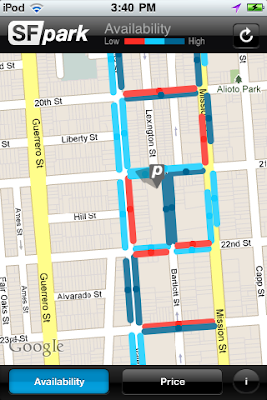Monday, May 16, 2011
Endeavour's Last Flight
The Space Shuttle Endeavour launched for the last time this morning at 8:56am EDT, carrying 6 astronauts and the Alpha Magnetic Spectrometer (AMS), as well as the new STORRM navigation and docking system to the International Space Station. This is the second-to-last flight of the Space Shuttle fleet, the last flight will be Atlantis' STS-135 mission, scheduled for July 12, 2011.
Thursday, May 5, 2011
Ah, crap! We're running out of Neodymium, too...
Wednesday, May 4, 2011
HTC Thunderbolt gets 26 Mbits/second!
Yep, 26 Mbits/s. That's the amazing download speed I was able to get on my friend's HTC Thunderbolt running on Verizon's 4G LTE network. We were at Rosamunde in San Francisco's Mission district, with four out of four bars of signal strength. The upload speed was 5 Mbits/s.
Labels:
IT,
Technology
Location:
San Francisco, CA, USA
Tuesday, April 26, 2011
The RoboEarth Project and The Rise Of The Machines
The field of Robotics and Artificial Intelligence seems to have been making significant progress these last couple of years. A few months ago, IBM's Watson supercomputer was able to beat the two best human players at Jeopardy. It is capable of understanding questions formulated in normal English language on a variety of fields like science, history or popular culture, and come up with an answer in less than a second.
Friday, April 22, 2011
The Skylon Spaceplane
British Aerospace company Reaction Engines Ltd is working on a design for a Single Stage To Orbit (SSTO) Spaceplane called Skylon that will take off and land horizontally from a runway, just like a normal plane. This concept has been studied several times already in the past, with projects such as the U.S.'s National Aerospace Plane (see my previous post) or the British HOTOL, but all encountered technological problems that they could not solve.
Thursday, April 21, 2011
SFPark iPhone app shows Real-Time Parking Availability in San Francisco
As you may or may not know, San Francisco's SFPark Project has been installing state-of-the-art park-meters and sensors on the ground that can tell if a car is parked in the spot. This information is transmitted wirelessly to their central server. Now this information is available to everybody on-line on the sfpark.org website, or with the SFPark iPhone app. It displays a map showing each street block color-coded depending on the approximate number of spots available.
Thursday, March 31, 2011
The Saga of NASA's Heavy Lift Launcher
Last week, after years of studies and negotiations, NASA finally released a preliminary design for the new rocket that will replace the space shuttle. The new rocket will be a Shuttle-Derived Heavy Lift Vehicle, meaning that it will make maximum use of existing Space Shuttle components. Basically they will keep the Space Shuttle External tank and two Solid Rocket Boosters unchanged, remove the space shuttle, take the shuttle's three main engines and put them and the bottom of the External Tank, and put the cargo on top of the External Tank. This design is pretty much the solution proposed by the DIRECT team last year, called the Jupiter launch vehicle.
Subscribe to:
Posts (Atom)






